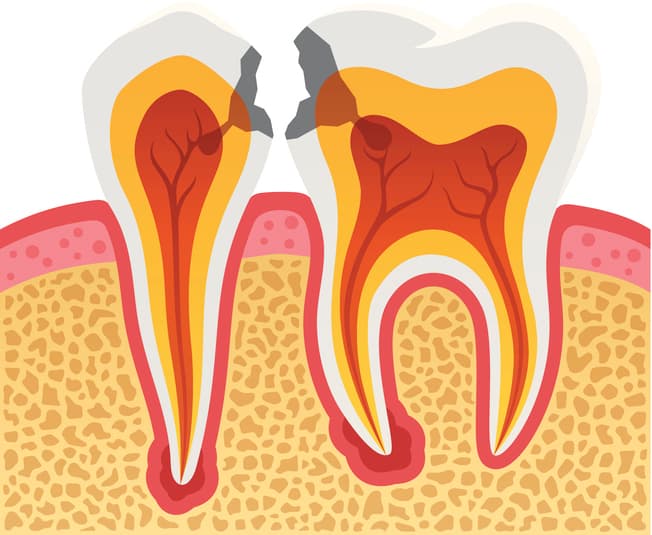
Tooth decay is the destruction of your tooth enamel — the hard, outer layer of your teeth. This issue can affect children, teens and adults. Plaque, a sticky film of bacteria, is constantly forming on your teeth. When you eat or drink foods or beverages containing sugars, the bacteria in plaque produce acids that can attack tooth enamel. The stickiness of the plaque keeps these acids in contact with your teeth, and over time the enamel can break down, according to the American Dental Association (ADA).
The types of caries formed can be broken down into two major groups:
Pit and fissure caries. These are found most often on the chewing surfaces of the back (molar and premolar) teeth, and the back of the front (anterior) teeth. Your teeth are composed of several sections of enamel, and where these sections meet, pits and grooves can trap plaque, causing decay. The proper application of pit and fissure sealants, a hard plastic material applied to seal the grooves and pits when the teeth have erupted, can help prevent this type of dental caries. The sealants also make it less likely that you will need restorations (fillings) on those surfaces of the teeth.
Smooth surface caries. These are found most often along the gumline or where two teeth touch (interproximal or the space between teeth), if plaque forms in those areas. With the proper use of dental floss, you can help prevent most smooth surface caries in the interproximal area, and using a manual or power toothbrush along the gumline can help prevent caries in that area as well.
Oral Hygiene Tools and Preventive Products
There are many dental health aids available that can help you avoid dental caries. A quality toothbrush that has the proper angulation and bristles to help remove plaque is essential. There are inexpensive power brushes available to help remove plaque more effectively. Your dental hygienist or dentist can help you select the best toothbrush for plaque removal.
The use of a toothpaste containing fluoride is also a great way to help prevent dental caries, as the fluoride in the toothpaste provides a protective coating that neutralizes the acid attack caused by plaque. Once again, it’s best to ask your dental hygienist or dentist for a professional recommendation.
Fluoride varnish is another oral health aide available at your dentist’s office. During your routine checkup, your dental hygienist can apply a thin coat of fluoride varnish to your teeth after the cleaning portion of your visit is completed. This varnish contains a concentrated form of fluoride, which when left on for an hour is incorporated into the surface of your teeth, making the enamel and exposed root surfaces more resistant to the acid attack from plaque. Fluoride varnish also helps reduces your teeth’s sensitivity to heat and cold.
Thanks to these medical advancements, dental caries have dramatically been reduced in children and adults. With consistent dental visits, good oral hygiene habits and a healthy diet, you may be able to protect your teeth from dental caries.
